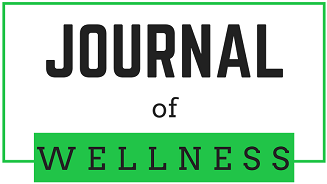
Funder
The author(s) received no specific funding for this work
Conflict of Interest
The author(s) have no conflict of interest to declare for this work
Abstract
Introduction: Burnout among physicians is a worldwide burden. While many causes of physician stress have been reported, we have found few quantitative studies of associations between burnout and participation in hobbies and interests outside of medicine. Our objective was to determine if health care professional burnout/disengagement could be mitigated by incorporating leisure interests and to characterize which specific interests, if any, are most significantly related.
Methods: We conducted an online survey of 2,563 US-based physicians and 512 residents/fellows and queried their participation in a list of 117 individual hobbies, which we then further categorized into three perceived levels of social interactivity: 36 as “social,” 47 “isolated,” and 34 “indeterminate.” We utilized the Oldenburg Burnout Inventory to quantitate burnout and disengagement.
In each of our 15 major categories of hobbies, burnout was significantly lower in those who were active in that category compared with those who were not (p ≤ 0.02) or who had given up certain hobbies (p ≤ 0.03). The highest levels of burnout were associated with discontinuance of hobbies, directly proportional to the number of hobbies given up. Across all demographic groups, lower burnout and disengagement levels were associated with a higher number of active hobbies and leisure activities. The least burnout and disengagement were associated with the subsets we defined as the most “social.” Specifically, despite being among the favorite hobbies by the majority of respondents, listening to music, home-based watching of TV and movies, and use of internet and video games were associated with the highest level of exhaustion.
Results: Significant differences were seen across age groups, genders, and physician specialties in the level of burnout (p < 0.01, p < 0.01, p = 0.02, respectively) and job disengagement (p <0.01, p = 0.02, p < 0.01, respectively). Younger providers (age < 60) and women had higher levels of burnout. Trainees had higher levels of burnout than full time, part time or retired physicians. North American graduates reported a slightly higher rate of burnout and disengagement than international graduates. 93.9% of physicians viewed outside interests as a substantial mitigation factor for burnout and disengagement.
Conclusion: Our study identified associations rather than causality. Nevertheless, emphasizing hobbies and non-medical outside interests might well prove useful to temper epidemic burnout among healthcare professionals. We especially encourage those hobbies with stronger social underpinnings.
DOI
10.55504/2578-9333.1160
Recommended Citation
Li, Yan; Lai, Cindy Y.; Friedrich, Bill; Liu, Chenxing; and Popkin, Joel H.
(2023)
"The Association of Hobbies and Leisure Activities with Physician Burnout and Disengagement,"
Journal of Wellness: Vol. 5
:
Iss.
1
, Article 8.
DOI: https://doi.org/10.55504/2578-9333.1160
Available at:
https://ir.library.louisville.edu/jwellness/vol5/iss1/8
Table 3 - Supplemental Material
